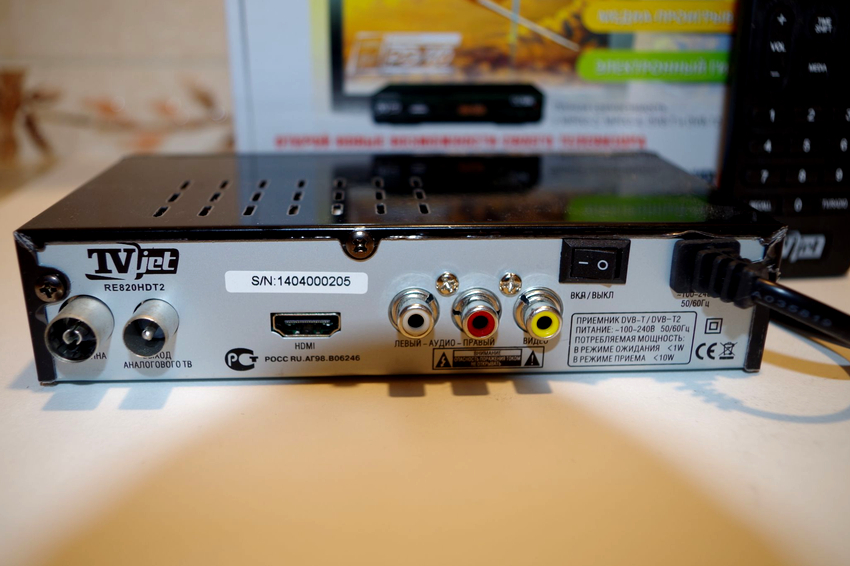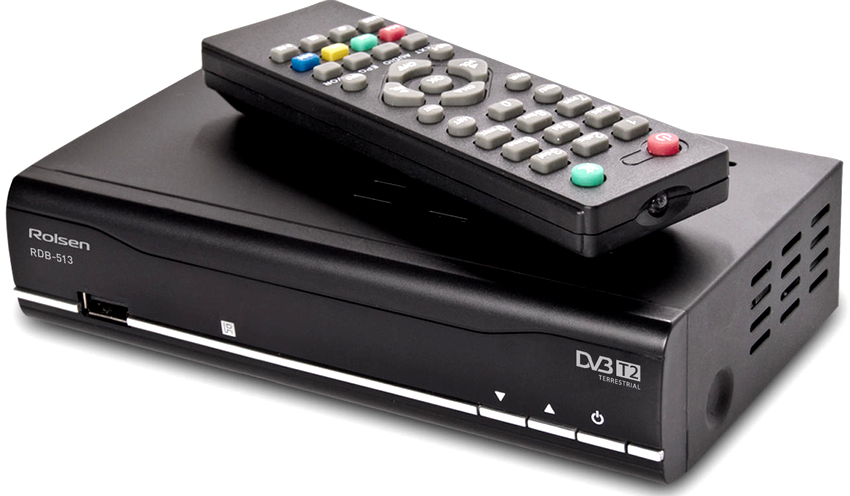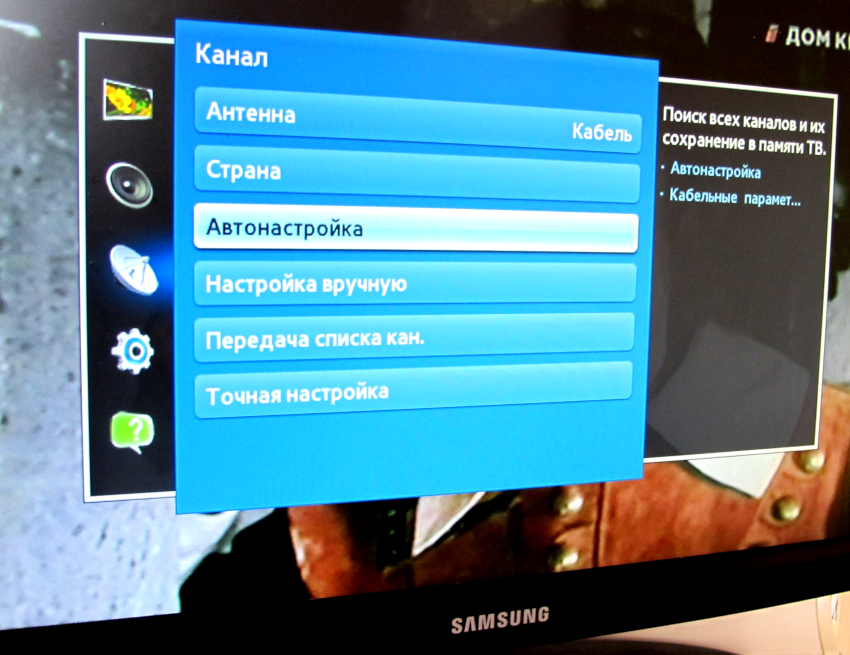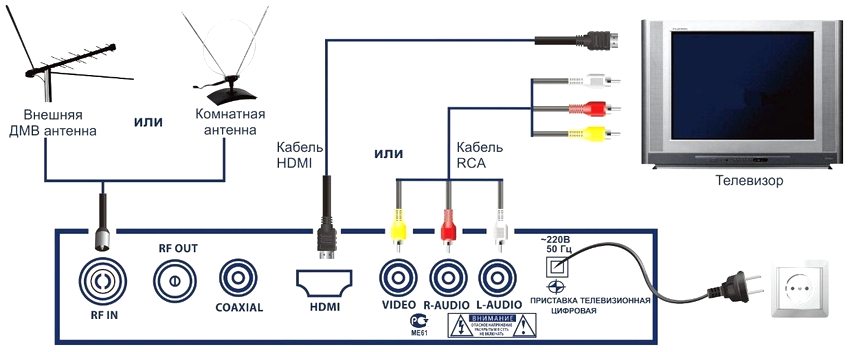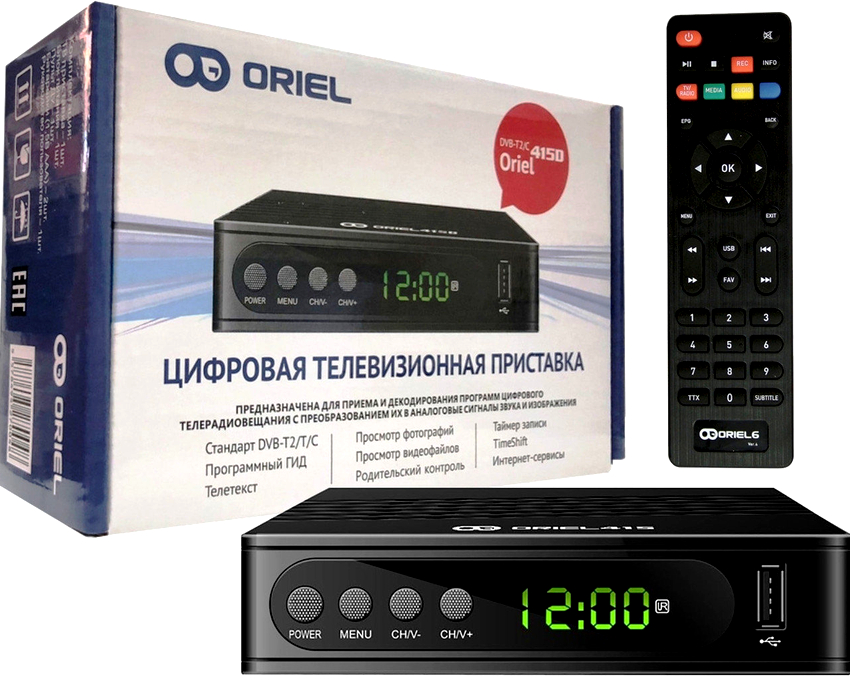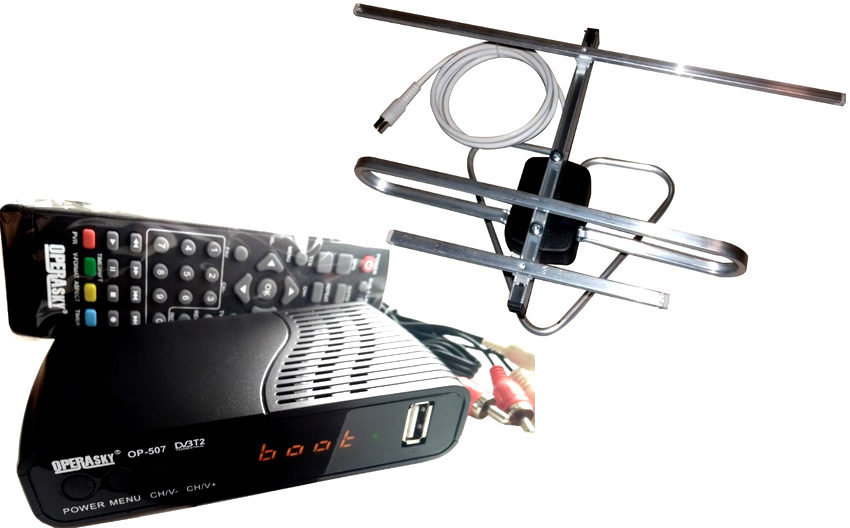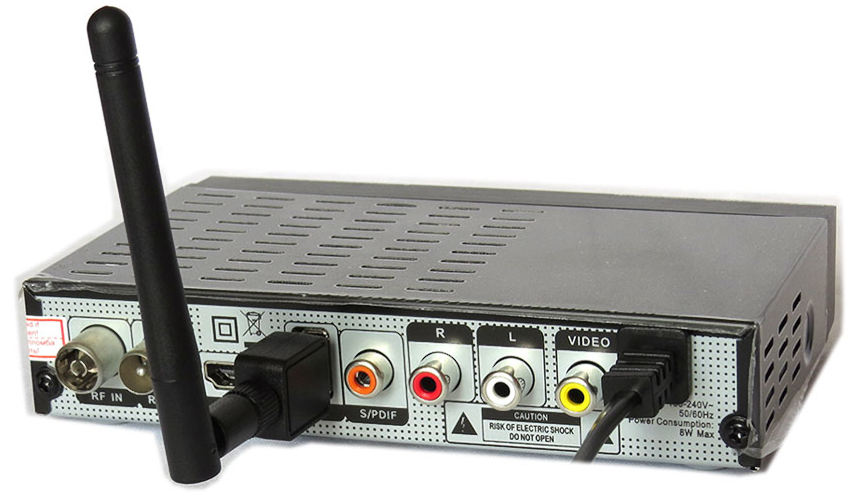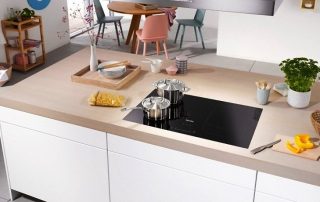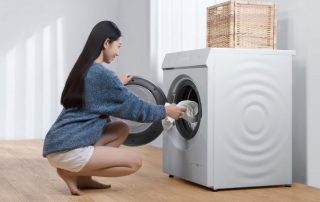Modern television has stepped far forward: the outdated analogue broadcasting has been replaced by modern digital technologies, which have opened up new and almost limitless prospects for people. In order to watch your favorite films and programs in the highest quality, you do not need to purchase a new TV. It is enough to buy a special device called a DVB-T2 set-top box, which receives and decodes channel signals.
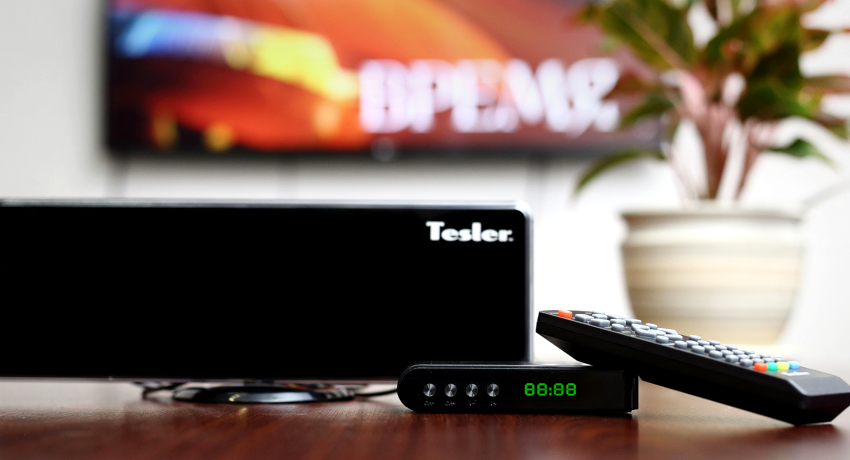
To watch your favorite films and programs in the highest quality, it is not at all necessary to buy a modern TV, it is enough to purchase a DVB-T2 set-top box
Content [Hide]
Functional features of digital set-top boxes for TV
To understand what a TV receiver is, you should go back a little to the history of the development of television broadcasting. Analog television, which remained the leader in the way of transmitting a visual signal, has gradually been replaced by digital broadcasting, which is more progressive and of high quality, over the decades. Its main advantage lies precisely in the higher picture quality, good sound level and a large number of received channels.
New generation televisions are already equipped with a digital broadcasting standard, but in order to prevent the owners of old models from having to throw them away, special digital TV receivers were invented. This is a kind of digital television receiver that captures, converts and transmits audio and video signals that come through a cable or from a satellite dish.
If analog receivers receive signals separately, then digital broadcasting channels are combined in one package, after which they arrive at the receiver for the purpose of subsequent decoding and separation. This feature is called multiplex. While in analog broadcasting of different channels may differ, in digital, literally all channels are reproduced in first-class quality. At the same time, a simple antenna, which comes with the TV set, is enough for receiving a TV signal.
Now digital broadcasting is produced in the DVB-T2 format, which replaced the outdated DVB-T.What it is? This is the most common standard, a decoder for digital TV broadcasting, which provides both high-quality picture and sound output in digital format, which comes from a terrestrial repeater.
Benefits of a digital TV receiver
To have a complete understanding of such a device as a digital receiver, you should list a number of its undeniable advantages, including the following:
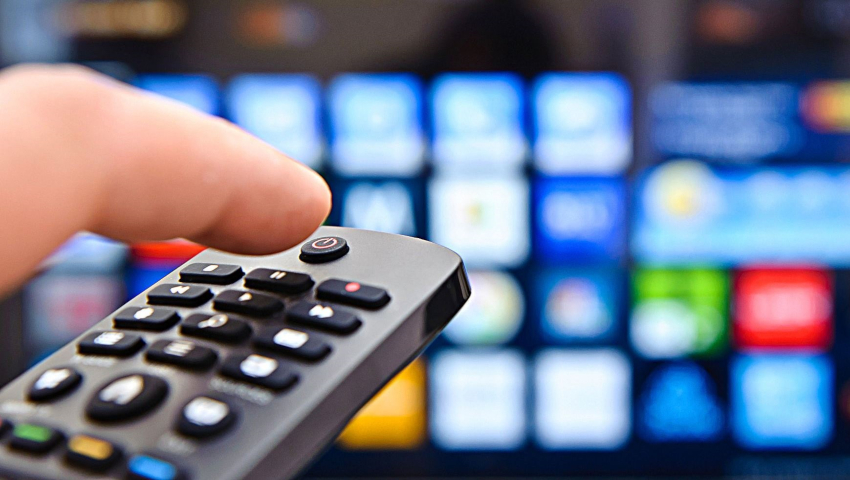
Connecting a digital set-top box to a TV will provide an opportunity to view teletext, subtitles, rewind and pause video
- high quality and clarity of television broadcasting;
- richness and purity of sound;
- elimination of interference of various kinds and origin;
- ease of connection;
- ease of use;
- no monthly fees and other payments for using the device.
Helpful advice! If we speak in simple and understandable words in search of deciphering the concept that this is DVB-T2, then you can pick up such a characteristic as an entertainment box. A digital set-top box is considered a very convenient device that will help turn the simplest, cheapest TV into the model with the highest broadcast quality.
In addition to the listed advantages, it should be noted that even the simplest receiver for digital TV not only receives a package of certain programs, but can also pause broadcasting for a certain time. Also, the latest devices are equipped with special connectors for connecting flash drives of various formats, which makes it possible for fans of movies and other various video and photo files to view them on the big screen.
Connecting the set-top box to the TV allows you to rewind, view teletext, subtitles and TV programs, pause video.

The DVB-T2 digital set-top box will help turn the cheapest TV into the model with the best broadcast quality
A significant number of models, thanks to a cable or Wi-Fi network, provide access to the Internet, which gives additional opportunities, in particular, allows you to view a large number of channels. The most advanced models are also equipped with a built-in hard drive, which actually turns the TV into a full-fledged media center.
Features and capabilities of digital set-top boxes for TV
Depending on the type, the DVB set-top box is capable of transmitting several signals simultaneously. It is worth highlighting the most popular models:
- DVB-T are designed to receive and transmit high-precision signals, while a simple antenna is enough to connect;
- DVB-T2 is already a more advanced version of DVB-T, which perfectly transmits television signals with the highest characteristics, therefore it is considered the most common version of digital television;
- DVB-C are designed to capture the digital cable TV signal using a special provider card;
- DVB-S presuppose a free and direct connection of the antenna to such a tuner, and it to a TV;
- DVB-S2 is an improved version of DVB-S with various modulations, which is equipped with a special decoder.
Many owners of modern TVs do not even know about such a concept as the DVT 2 tuner, since it is already built into their device. Moreover, it is no longer possible to find a TV set that accepts the analog broadcasting format on the primary market. Modern models are equipped with special decoders. They are of five types:
- DVB-S / S2, performing decoding of the digital satellite signal of the first and second generation;
- DVB-C installed in TVs designed to receive cable TV;
- TV set with a digital tuner DVB-T2, the purpose of which is to decode the signal of terrestrial digital TV broadcasting, which allows the output in the digital format of the picture originally received from the terrestrial repeater (RTRS tower).
Built-in decoder and DVB-T2 receiver: features and differences
If the TV does not have a built-in TV tuner, a special digital receiver, also called a digital set-top box, is used to decode the signal. The device operates as a separate device with an independent power supply.
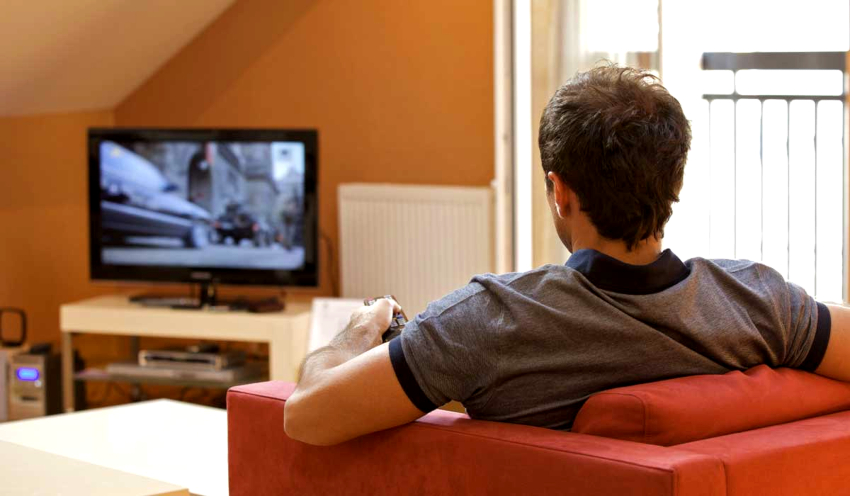
A TV decoder can have not only its own physical channels, but also a full-fledged interface with built-in Smart TV
It is important to know! Each broadcast standard has a different data rate and modulation, that is, decryption of digital data. In this regard, decoders of other types do not decode the T2 signal, with the exception of digital DVB-T2 receivers.
Depending on the factory configuration and the characteristics incorporated into the device, it can not only decode the digital broadcast signal, but also differ in additional options. In particular, a decoder can have both its own physical channels and a full-fledged interface with built-in Smart TV.
The functional characteristics of the decoder built into the TV are mainly determined by the model of household appliances itself, and most of them include:
- system settings, which are aimed at regulating digital broadcast signal channels;
- advanced settings or user settings may have parental control functions, as well as blocking access to the TV by other users.
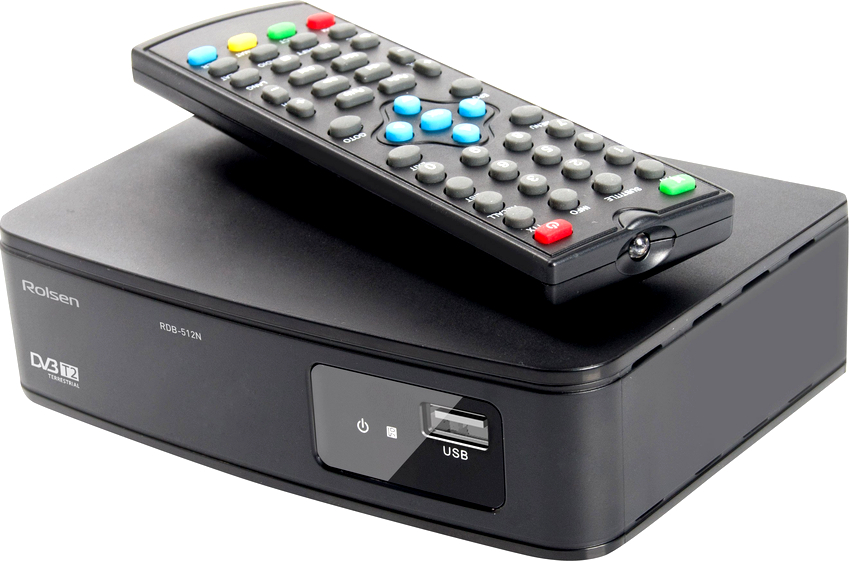
A separate digital television receiver, in addition to the decryption function, performs a number of other operations
Separate digital television receivers, in addition to the decoding function, perform a number of other purposes, since they themselves are carriers of information for physical channels. The most powerful is the DVB-T2 / DVB-C Smart set-top box, which has several decoders designed for different broadcasting standards, including an additional number of TV widgets.
Complete set for digital TV receiver
In order to ensure transmission from the receiver to the TV, an AV or RCA cable is used, which transports the image and sound signal through different wires. In this case, the decoding of audio and video signals occurs independently of each other, that is, AV and RCA cables differ exclusively in terms of bandwidth. The AV cable can only transmit HDTV 720p, while the Tulip also supports Full HD 1080p quality.
At the same time, almost all models in the set have two wires, and the type of connection is chosen depending on the presence of jacks in the TV. The minimum set-top box for a DVB-T2 TV set usually includes:
- main device;
- AV and RCA cables;
- Power Supply;
- remote control.

The complete set of the DVB-T2 digital set-top box includes: the device itself, a power supply, RCA and AV cables, and a remote control
It should be noted that all receivers operate under 12V voltage. When connecting the device, you must first read the operating manual and follow the instructions strictly.
The most advanced devices support 3D and 4K resolution. In addition, each set-top box is equipped with a certain number of outputs that are required to connect different external devices.
How to find out if your TV supports DVB-T2: simple tricks
If a DVB-T2 television receiver is already built into the TV and the device can independently receive a T2 signal, then there is no need to purchase a special set-top box. In this case, it is enough to connect the antenna to the TV and start autosearch of channels. After a short setup, you can view the content of interest in high digital quality.
Interesting to know! The first TVs with built-in DVB-T2 set-top boxes went on sale in 2012, so older TVs do not support this feature.
The best way to determine if there is a built-in tuner is to read the instruction manual.Specifications are also indicated on the packaging of the TV equipment manufacturer. In this case, the quality of the device is best checked directly in the store before making a calculation.
You can also learn more about the model using the Internet. To carry out the check, it is enough to enter the full name of the device into the search engine. On the site of almost any online store, you can familiarize yourself with the digital standards that the specified device supports.
The easiest way to determine the presence of a DTV 2 set-top box built into the TV is to ask a sales consultant. Since the employees of the trading network are not interested in losing customers, they have no reason to dissemble in this case.
Having made sure of the presence of a built-in T2 set-top box and other functions, you can safely buy a TV, because it is digital TV that opens a new look at entertaining and educational TV programs.
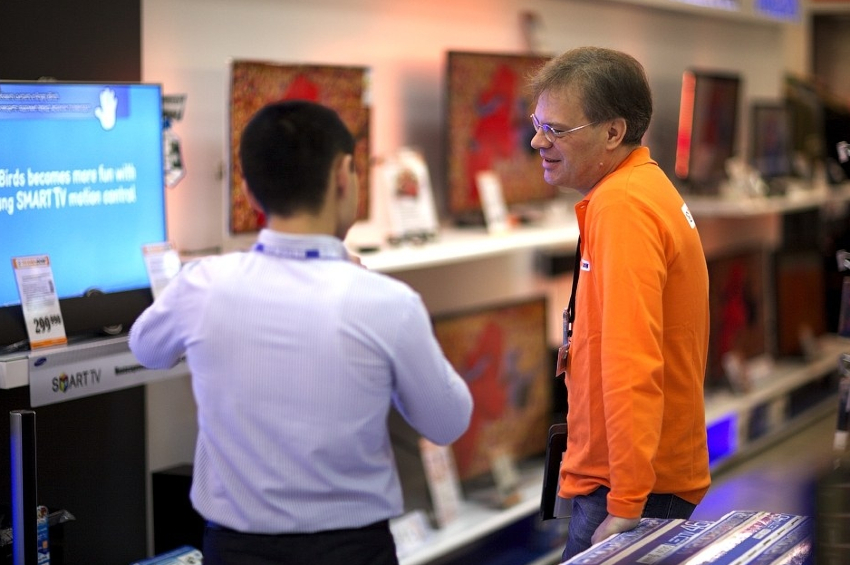
A very simple way to find out if the DTV 2 set-top box is built into the TV is to ask a sales assistant
How to connect a DVB-T2 tuner to a TV
With the help of the instruction, almost any user can easily connect a DVB-T2 digital set-top box to a TV to watch a huge number of TV channels in perfect quality. To do this, it is enough to clearly act according to the proposed scheme. It should be noted that the sequence of actions is almost the same for all TV models.
Related article:
What is Smart TV on TV: features of intelligent functionality
Advantages and disadvantages of an intelligent function, ways of using it. Review of "smart" TVs from different manufacturers.
It is necessary to remember such a small but important detail as the batteries in the remote control. Then you should proceed according to the following scheme:
- The digital television receiver itself is installed in close proximity to the TV.
- An ether decimeter antenna is connected to the device.
- Using a special AV cable or a tulip cable, the decoder is connected to the TV.
- Only then is the tuner connected to the mains.
- The TV needs to be switched to TV / AV mode.
Thus, the digital receiver is connected to the TV and ready to receive the signal. To do this, you need to go to a specific site to find out the broadcasts of TVK digital multiplexes. If the TV model already assumes the presence of a built-in TV tuner, then it is enough to start auto-tuning or select the appropriate channels. Digital broadcasting starts from channel 21. This should be taken into account when setting up yourself.
Helpful advice! You can manually tune a pair of channels yourself. This is important if parallel use of analogue broadcasting programs is expected. If you use only autosearch, the ATV channels will simply disappear.
Digital set-top box DVB-C and a new generation of tuners
Special attention should be paid to the DVB-C tuners, which are set-top boxes that comply with European standards. Broadcasting is carried out via a special fiber-optic cable. The system itself was invented back in 1994, and gradually gained popularity in Europe, Asia and America. The advantages of a tuner for a DVB-C TV are significant savings in frequency resource.
This is due to the fact that the basic physical channel contains up to eight programs, while the bandwidth of the DVB-C set-top box is much higher. The quality of relayed TV programs is also high in comparison with tuners for analog TV. Thus, by purchasing a digital set-top box DVB-C, the user gets the opportunity to enjoy watching his favorite films and programs in excellent quality.
Leading European manufacturers specialize in the manufacture of DVB-C receivers, constantly improving devices and opening up a number of new opportunities for owners.For example, the presence of USB inputs for flash drives and a hard drive turned it into a simple but fully functional DVD player. Now there are models equipped with a 5.1 Dolby Digital sound decoder, which to some extent expanded the standard range of functions of a media player.
Then there was a line of new processors for tuners, which led to a reduction in their cost of production. So, in 2017, models of DVB-T2 set-top boxes with a WI-FI adapter appeared, which have new functions. It should be noted that the price of such devices has not increased significantly. The Wi-Fi adapter is not built into the DTV2-TV set-top box, but is purchased separately; you can connect it via the USB input.
Features of signal reception through the DVB-T2 tuner: antenna and its characteristics
When buying a set-top box for digital TV DVB-T2, many are wondering what kind of antenna can receive a digital TV broadcast signal. Here the answer is short, but not unambiguous - almost any. What this means, we will consider further.
This availability is due to the fact that digital television broadcasts in the same decimeter range and within the same frequencies as analog TV. Therefore, it is best to give preference to a conventional decimeter antenna and not spend extra money on purchasing an expensive antenna receiver.
Surprisingly, even a simple and inexpensive horn antenna can be used to receive a DTV-T2 digital signal through a tuner. In a big city, you can use it to catch more than 20 channels, that is, all that are now being relayed. It all depends on the location of the TV tower and the absence of obstacles to receive the signal. A simple indoor decimeter antenna is perfect, as well as a common antenna in high-rise buildings.
Helpful advice! Judging by the reviews on the Internet, you can even catch a digital signal using the DVB-T2 prefix with a piece of cable. The main thing is that there is no interference, and the distance from the TV tower is minimal.
Please note: the farther the distance from the repeater, the more powerful the antenna you need to select. In this case, you can use a conventional external decimeter antenna, including a traditional "dryer", preferably with an amplifier.
The main thing in the matter of purchasing an antenna is not to rush to buy new equipment, since in the end it will be possible to completely get by with what is available at home.
DVB-T2 set-top box: features and subtleties of choosing the right model
If there are no difficulties with the acquisition of an antenna, then the choice of the right receiver should be approached more responsibly. The modern market offers a wide selection of different models, so before deciding which DVB-T2 set-top box to choose, it is necessary to study the possible and inherent characteristics of a particular device, starting from specific criteria. The main ones are as follows:
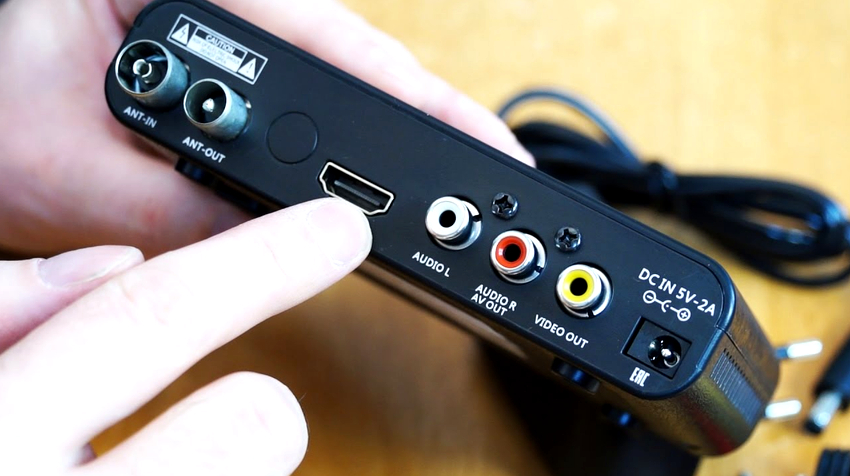
The modern market offers a large selection of different set-top boxes, so before making a choice, you need to study the characteristics of the device
- The speed and stability of work, which is determined by several factors. An objective opinion about which receivers for digital terrestrial television is better can be obtained based on user feedback on a particular model.
- Received signal quality. It should be noted here that not all tuners simply connect to all TV channels and easily find a wireless connection. To do this, it is advisable to check the operation of the device directly in the store.
- The ratio of price, quality and technical capabilities of the device.
- Operating system availability.
- Easy to install and easy to use.
- Features of the interface.
- The presence of additional functions, which may include support for an SD card, equipment with voice search, the ability to control from a mobile device.
Thus, before choosing a digital set-top box for a DVB-T2 TV, you should study these characteristics, and it will be equally useful to familiarize yourself with the latest ratings of devices. After that, there will be a certain opinion about which particular tuner is optimal.
Based on manufacturer ratings, expert ratings and customer reviews, ratings of digital TV tuners can help you make the right choice and get the right model. For this purpose, consider the TOP-5 receivers.
DVB-T2 digital set-top boxes: rating of the best models
The first place was deservedly won by the set-top box for TV DVB-T2 - the Selenga T40 model, which is distinguished by a high degree of reliability. The advantages of this device include an affordable cost, extensive functionality, an intuitive interface, good quality components and a high level of reproduction of digital channels. The disadvantage is the noise generated during operation.
The BBK SMP123HDT2 model perfectly receives the signal, has a broadcast recording function, is equipped with a display with a clock, and is compact in size. Has manufacturer's firmware to be updated. The disadvantages of the DV3-T2 model include the remote control, which does not have high sensitivity.
IconBIT Movie T2 is not just a set-top box, but also a full-fledged media player. The tuner supports HD video, has a recording function, basic and additional options that allow you to play not only video, but also audio files. Users in their reviews also point to the excellent ability to pick up the signal, the beautiful design of the model with an external infrared port, which makes it possible to connect additional devices. Minus - excessive heating of the decoder during operation.
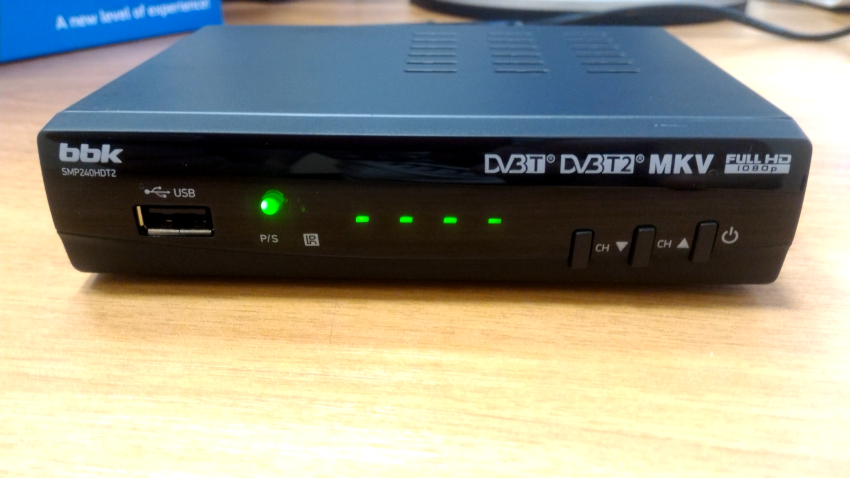
The BBK SMP123HDT2 prefix has a broadcast recording function, excellent signal reception, is equipped with a display and has a compact size.
The HARPER HDT2-1005 receiver has the best level of digital signal transmission quality, which allows you to find many channels. It's easy to plug in, easy to set up, and wall-mountable. Among the minuses is the lack of control buttons on the case.
The advantages of the BBK SMP240HDT2 model are low cost, the ability to customize the broadcast from external media, ease of installation and management, and the presence of a recording function. The disadvantage is that the remote control is inconvenient to use.
Knowing what characteristics can have digital receivers for tv, it will be much easier for an average person to choose the right model. Having studied the possibilities and details of the installation, the user can independently simply and easily connect and tune the tuner to receive a signal from any antenna. As a result, you can get excellent digital video and sound quality even on an old analog TV.
